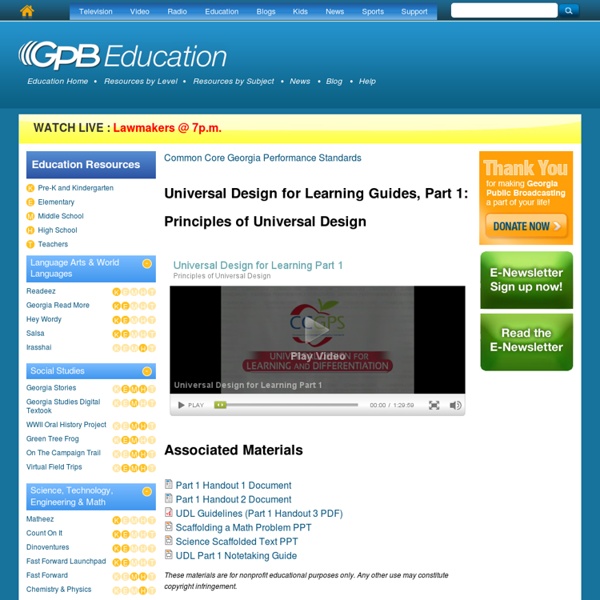Universal Design for Learning Guides, Part 1: Principles of Universal Design
Universal Design for Learning Guides, Part 2: Scaffolding Texts and Providing Explicit Strategy Instruction
Universal Design for Learning guides HOW students will learn. As local districts implement the state curriculum, they make choices regarding instructional resources, materials, and methods. By focusing on multiple means of representation, multiple means of action and expression, and multiple means of engagement during district-wide, school-wide, or grade-level decision making, local teachers and administrators can collaboratively collect and/or create a wide variety of resources that classroom teachers can utilize to differentiate in their individual classrooms in order to meet the needs of ALL students regardless of whether they are gifted and talented, students with disabilities, English language learners, or the child next door. These materials are for nonprofit educational purposes only.
Related:
Related:



